David Borden is one of the foremost exponents of live electronic and minimalist music. He has been active on the new music and contemporary classical scenes for two decades. He first came to attention as the driving force behind Mother Mallard, the world's first all synthesizer ensemble.
"There’s an endearing
struggle in these tracks - the awkward steps of musicians learning to
master machines that had barely been invented yet. Borden, along with
Steve Drews and Linda Fisher, weren’t just making music - they were
taming electronic beasts.
It’s imperfect, it’s visionary, it’s pure analog warmth and digital precision, and most of all, it’s vital." – Chain DLK
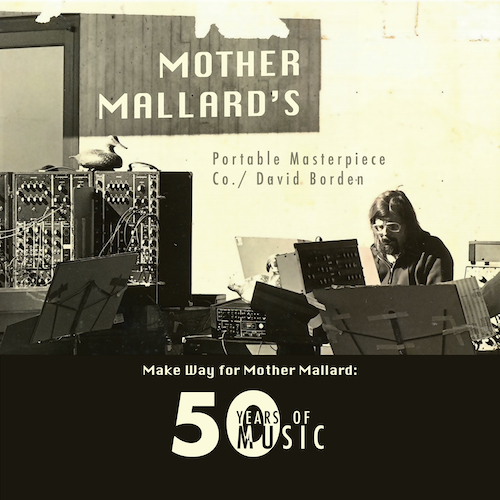 MAKE WAY FOR MOTHER MALLARD : 50 YEARS OF MUSIC RUNE 513/514 |
In a groundbreaking career spanning more than half a century, American composer and musician David Borden helped pave the way for electronic music – via both analogue synthesizers and digital instruments – to be integrated into New Music/ Creative/ Classical composition and live performance. In 1969, he founded the world's first synthesizer ensemble – Mother Mallard's Portable Masterpiece Co. – in Bob Moog's Trumansburg studio, working with Moog's prototypes and analogue equipment, and he later founded (1987) and headed Cornell University's Digital Music Department, inspiring new generations with digital music via Apple desktop and laptop computers. Simultaneous with his work at Cornell, Borden was a prolific composer, creating countless classical, experimental and 'beyond genre' works often performed with his ensemble. His work includes one of the most important documents of American classical minimalism: The Continuing Story of Counterpoint, a 12-part cycle that Cuneiform Records released on three CDs between 1989-1991. This 2-disc Cuneiform Records release, Make Way for Mother Mallard: 50 Years of Music, features one disc of early (1970s) and one disc of recent (2019) Mother Mallard performances of several key Borden pieces.
~~~~
STEVE FEIGENBAUM, CUNEIFORM'S HEAD, REMINISCES ON WORKING WITH DAVID BORDEN AND HIS ENSEMBLE, MOTHER MALLARD'S PORTABLE MASTERPIECE CO.: "David Borden and Cuneiform’s relationship go back to even before Cuneiform, as I was a partner in a short-lived record label called Atmosphere that was meant to focus on electronic music and managed to put out two releases (Darren Kearns and The Nightcrawlers) before calling it a day. If my long-term memory serves me correctly, David Borden’s Anatidae was
scheduled as Atmosphere’s third release, but when that label folded and
as I had recently established Cuneiform on my own, it became
Cuneiform’s fourth release, coming out on vinyl in 1985. MUSICIAN DAVID BORDEN REMINISCES ABOUT 50 YEARS OF MUSIC WITH HIS MOTHER MALLARD PORTABLE MASTERPIECE CO. ENSEMBLES
|
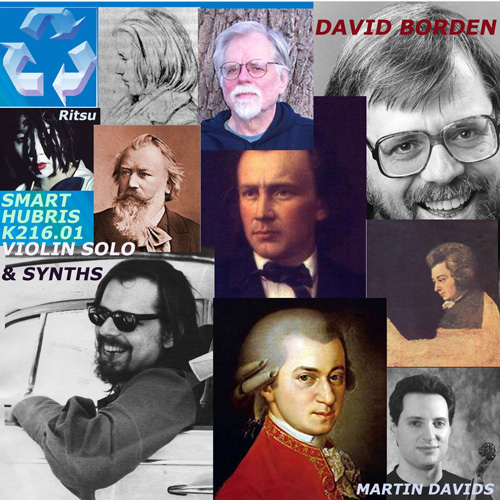 SMART HUBRIS RUNE 3356 |
David Borden: Johannes Brahms composed the violin part and I composed everything else. The idea of borrowing material from other composers and adapting it to one’s own use has been a part of music history from the beginning. In Composers at Work by Jessie Ann Owens, composer Heinrich Isaac (C. 1445-1517) is noted for his technical mastery of working with pre- composed melodies by leaving the original untouched while adding florid voices around it. Bach lifted bass lines from Handel (The Goldberg Variations) and transcribed and transformed concertos from Vivaldi. Charlie Parker kept the harmonic content of tunes by composers like Gershwin, Cole Porter and others while supplying new melodies or heads for them which totally transformed their character while giving him the needed harmonic context for improvisation. K216.01
(2003) is, like much of my work from that era, a polyphonic composite
utilizing a melodic part from another composition. In this case,
Mozart’s Violin Concerto No. 3 in G Major. While there are precedents
for this kind of work, it has not been in vogue since the 15th century
outside of the Baroque Chorale-based pieces. Also, this is a more
radical approach since it does not alter the original part in any way.
These works receive their inspiration from Buckminster Fuller’s
definition of synergy ( . . . behavior of whole systems unpredicted by
the behavior of their parts taken separately) and by the work of
painters Chuck Close, Roy Lichtenstein and George Deem. Close starts
with a photograph whose content and structure he then transforms into a
unique painting. Some of Lichtenstein’s work (like Femme Au Chapeau) is
based entirely on paintings from history. George Deem has based many of
his paintings on Vermeer’s work. In addition his Art School series
quotes various aspects of paintings from many artists throughout
history. In all cases this method forces the use of techniques
different from those normally at the artist’s command. The results are
surprisingly different from the catalysts. I hope this is the case with
these musical works as well." |
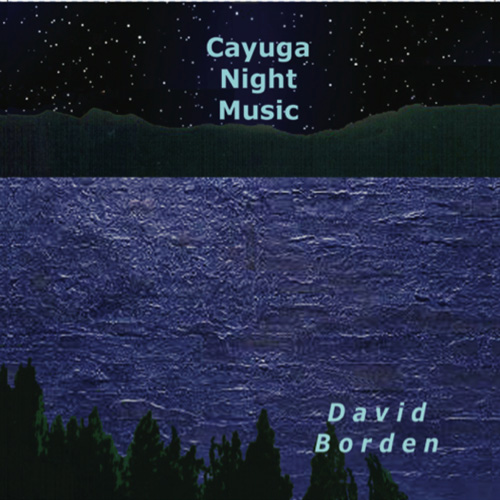 CAYUGA NIGHT MUSIC RUNE 3355 |
A reissue of Borden's 1993 tribute to Cayuga Lake's awe-inspiring beauty. My favorite time to run was between 2:00 and 3:00 am; I did it in all seasons and weather conditions. I sense that this ideal state of affairs is ending as the Ithaca-Lansing area is becoming over- developed; more and more docks appear, a marina, and homes closer to the lake’s edge and along the top of the cliffs. Already more than one of my favorite meditation spots has disappeared as trees are cut down and brush is cleared away. It’s fortunate for me that these pieces were composed before my inspirational scenes became too cluttered with man-made objects or disappeared altogether. THE COMING OF WINTER LAKE ICE SNOW GORGE WITH FULL MOON FIREFLIES NORTHERN LIGHTS CRICKET DREAMS MIST VISIONS FOG, STARS, TRAIN, WEST HILL LIGHTS |
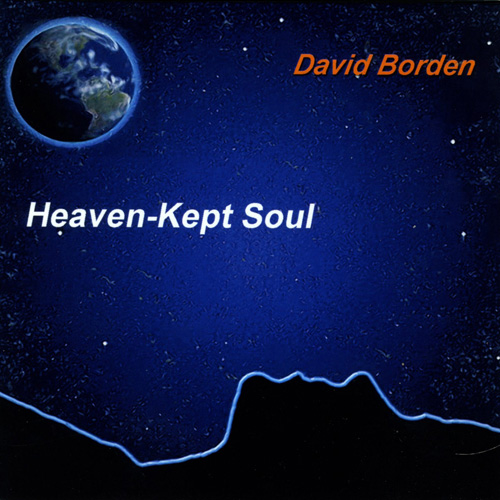 HEAVEN-KEPT SOUL RUNE 3350 |
The title Heaven-Kept Soul is an anagram derived from the name Kathleen Supové, the pianist for whom this piece was composed. She is known for her boundary- breaking ways of dissolving the wall between performer and audience. The piece is patterned structurally on The Goldberg Variations by J. S. Bach. It has thirty variations on a theme stated in the beginning by the piano. The compositional challenge is that starting with "Variation No. 3", every third variation is a canon at a different interval. Most of the variations are composed for synthesizers accompanying an amplified piano; there are a few variations for solo piano. The synthesizer and sampled sounds have been collected on computers, mapped onto keyboards, and played using a USB keyboard controller and laptop with REASON software. Altogether, the piece requires two USB keyboard/ computer performers and one pianist. |
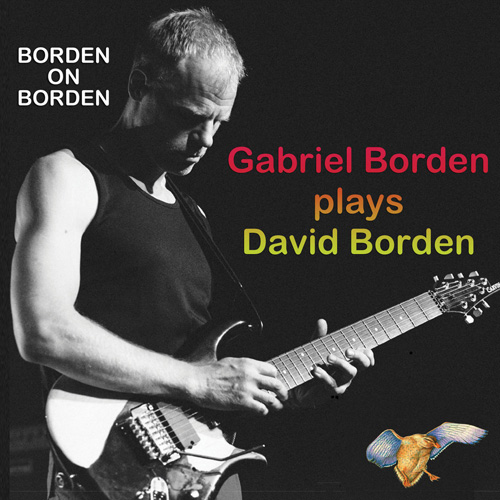 BORDEN ON BORDEN: GABRIEL BORDEN PLAYS DAVID BORDEN RUNE 3349 |
"During the summer of 1987 Trudy and I took our son Gabriel to see guitarist David Torn perform in Trumansburg, NY at the Rongovian Embassy, AKA The Rongo. Gabe was eighteen. He had had a few years of piano lessons when he was younger, but had given them up at around age 11. The next day, after hearing David Torn’s beautiful performance, Gabe bought a Stratocaster, and proceeded to teach himself the guitar. That is to say, he spent eight to twelve hours a day learning the instrument on his own with the help of various guitar method books he bought along the way. About a year later, he contacted Chris Woitach, a local guitarist who now lives in Washington State, for lessons. He also discussed with me and with Les Thimmig, the woodwind virtuoso and great jazz improviser who was a member of my ensemble Mother Mallard, how best to learn about improvisation. I wasn’t much help, but Les recommended a book by Howard Roberts, the noted jazz guitarist. So Gabe added that to his daily routine or should I say marathon, because, really, from the summer of 1987 until the end of summer 1989 he spent practically all of his waking hours practicing the guitar. Many, many hours were spent methodically upping the tempo of the metronome so that he could play things perfectly at any tempo he chose, no matter how fast or slow. By the end of the summer of 1989 he sounded like a virtuoso. Actually, he WAS one.” – David Borden "Having
heard my father's pieces, especially The Continuing Story of
Counterpoint (TCSOC) series, throughout my childhood, as they were
being composed and premiered, I had subconsciously begun to develop my
own arrangements and interpretations. The process of learning some of
the parts and recording and performing them led to the conscious
crystallization of these ideas.” – Gabriel Borden |
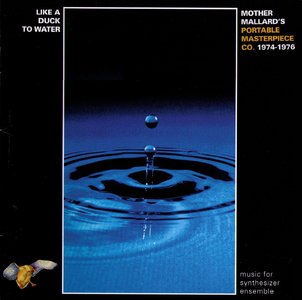 LIKE A DUCK TO WATER RUNE 147 |
Like A Duck To Water was
Mother Mallard's 2nd & final release, and was originally released
in 1976. The music is a unique and extremely enjoyable blend of space
electronics (ala Tangerine Dream, Klaus Schulze), minimal music (Terry
Riley, Philip Glass), and contemporary classical & electronics
(Gordon Mumma, John Cage). This album showcases a uniquely American
slant on synthesizer music by a band whose pioneering contributions to
the genre had been forgotten until now. Includes the original album,
20' of previously unheard bonus material, and bonus CDRom material; a
QuickTime video of the band in performance in 1976. With David Borden,
Steve Drews & Judy Borsher. "A marvel of pioneering electronica." - The Wire |
 1970-73 RUNE 109 |
1970-73
collects the first album by Mother Mallard's Portable Masterpiece Co.
and previously unreleased recordings. MMPMC were also one of the very
first [possibly the first] performing synthesizer ensembles, working
closely with Robert Moog, whose first factory was nearby. This material
pre-dates or is contemporary with the first contributions to the genre
and had been forgotten until now. With Steve Drews & Linda Fisher. |
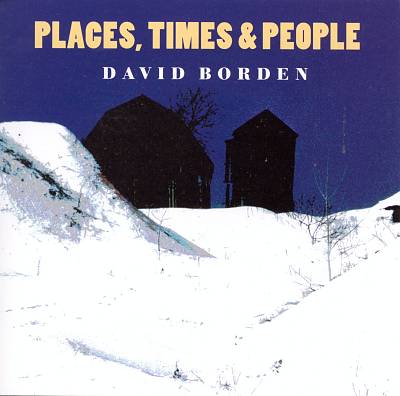 PLACES, TIMES & PEOPLE RUNE 58 |
Places, Times & People
is a collection of ten medium length, mostly solely keyboard
performances. It showcases a broad spectrum of Borden's compositional
skills. Compositions on this disc range from piano duets, to electronic
soundscapes, to dense, interlocking multi-keyboard works. Places, Times
& People contains something for everyone, for all established
Borden fans and newcomers alike. |
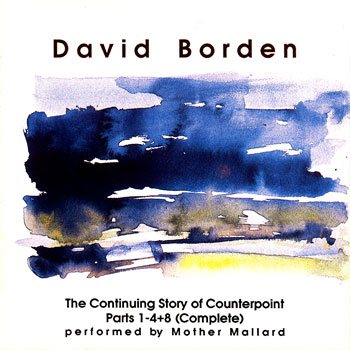 COUNTERPOINT PARTS 1-4 + 8 RUNE 28 |
The Continuing Story Of Counterpoint
is a remarkable 12 part musical cycle that Borden composed between
1976-87. Lasting 3 hours, Cuneiform has released this seminal work on 3
CDs, each containing 4 parts. The music is a pleasing and highly
listenable mixture of classical forms, dense textures, strict
counterpoint, and high energy electronics. AUDIO Magazine had this to
say about the series: "When released in its entirety, this series may
stand as the 'Goldberg Variations' of minimalism, a canon of work that
defines a style and an era." |
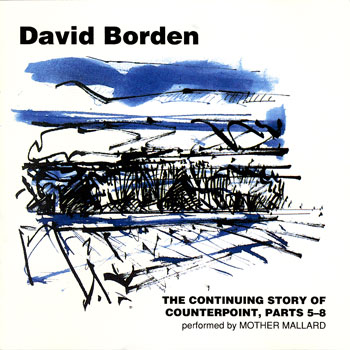 COUNTERPOINT PARTS 5-8 RUNE 21 |
The release of The Continuing Story Of Counterpoint, Parts 5-8 caused
one reviewer to note that "David Borden's music has always stood alone
with its logic of motion, elegance of line and form, and deft use of
state of the art technology." |
|
|
David
Borden is one of the foremost exponents of live electronic and
minimalist music. He has been active on the new music and contemporary
classical scenes for two decades. He first came to attention as the
driving force behind Mother Mallard, the world's first all synthesizer
ensemble. |

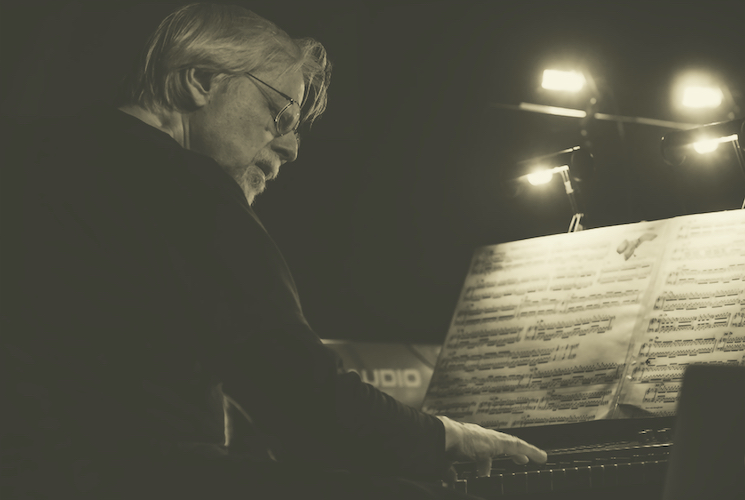
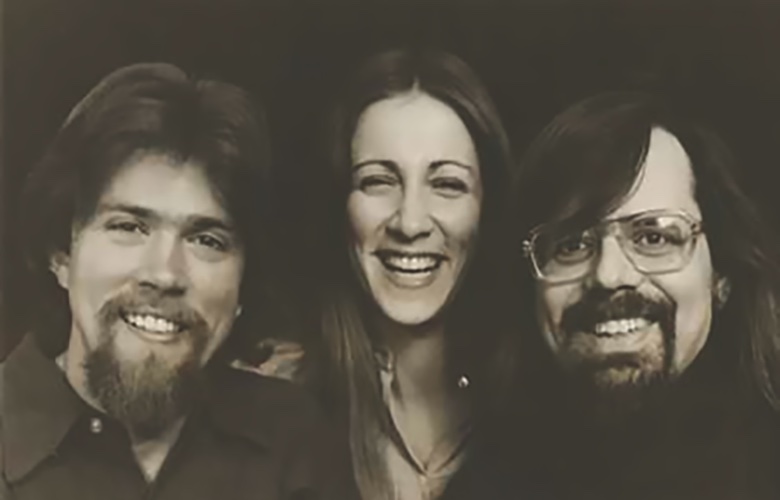
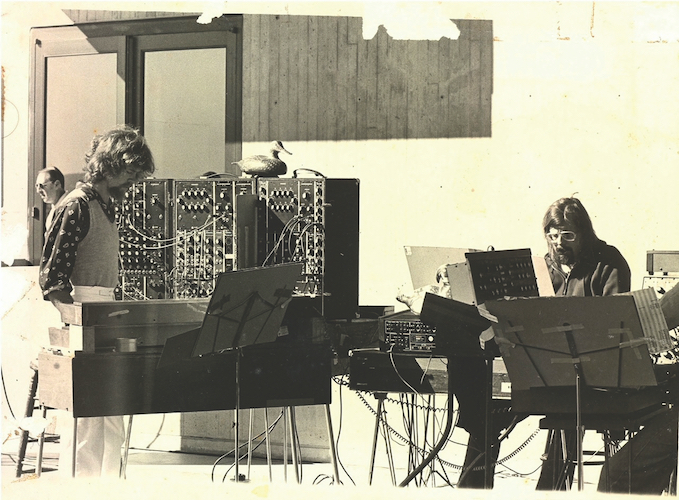
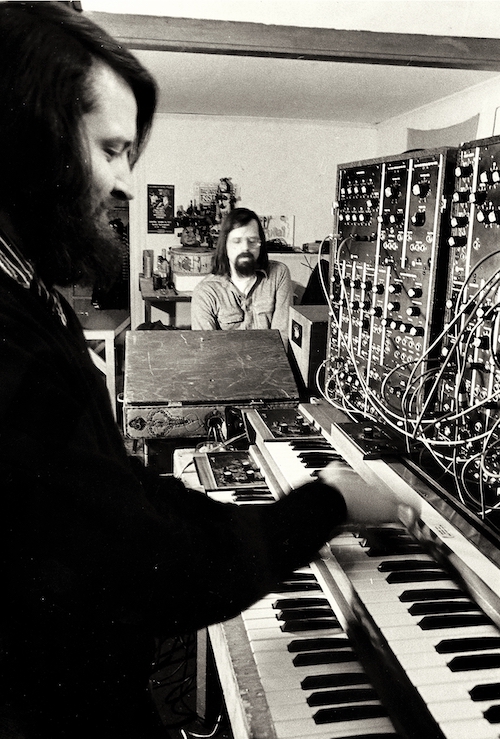
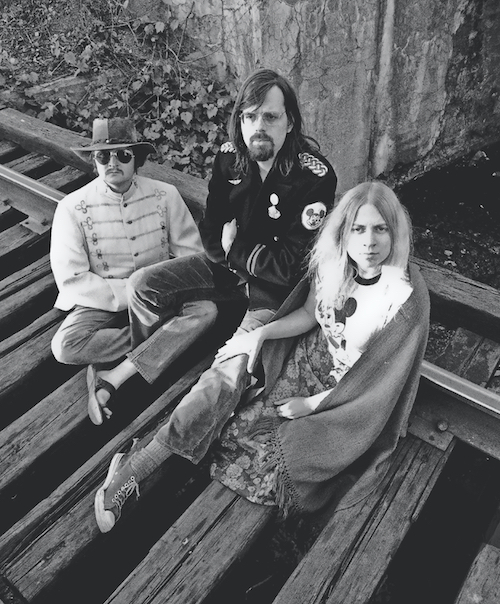
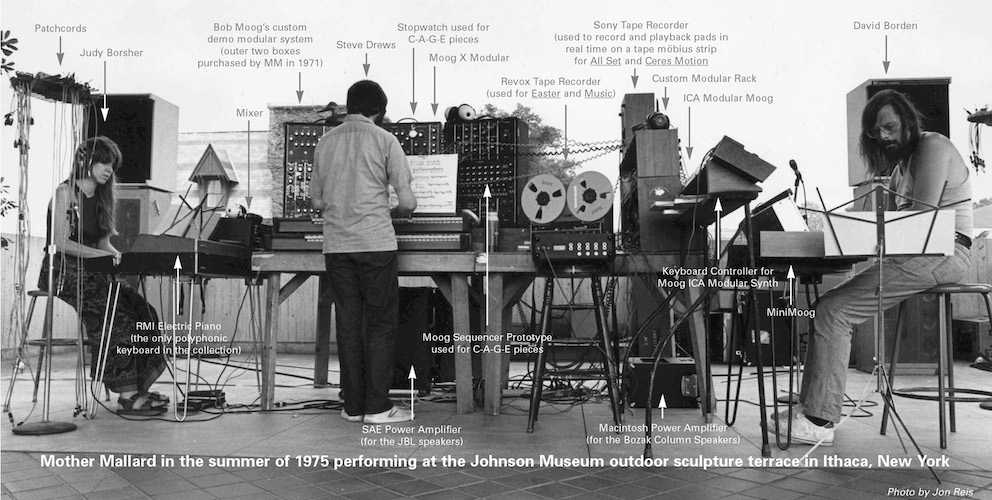
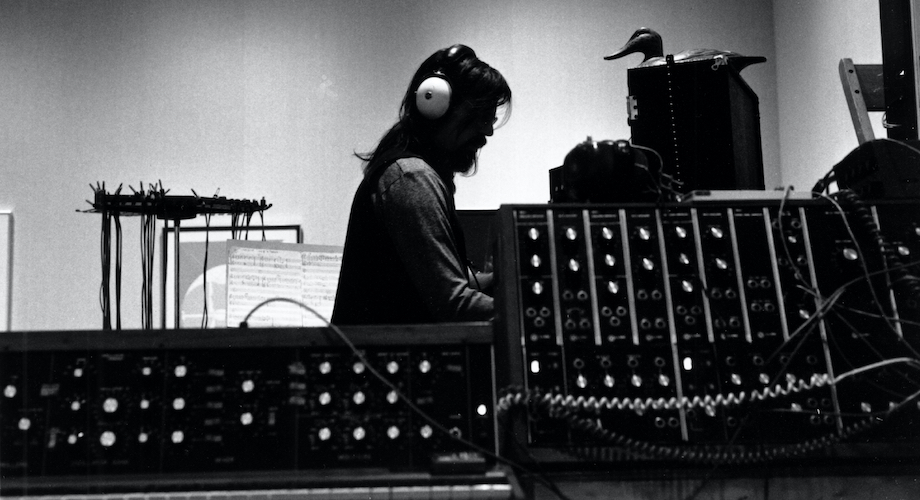
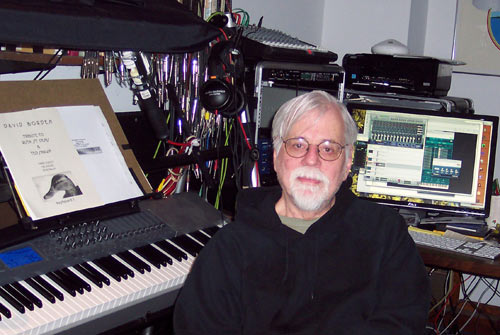
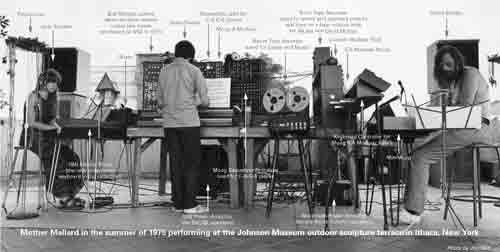
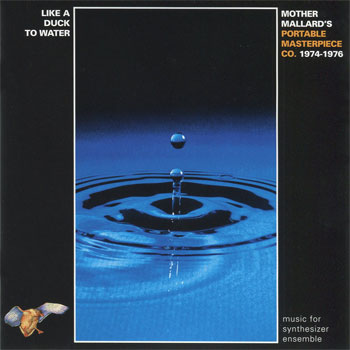
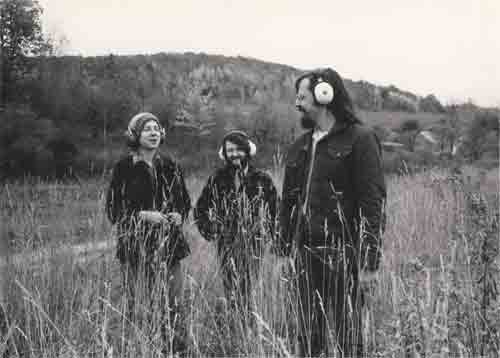

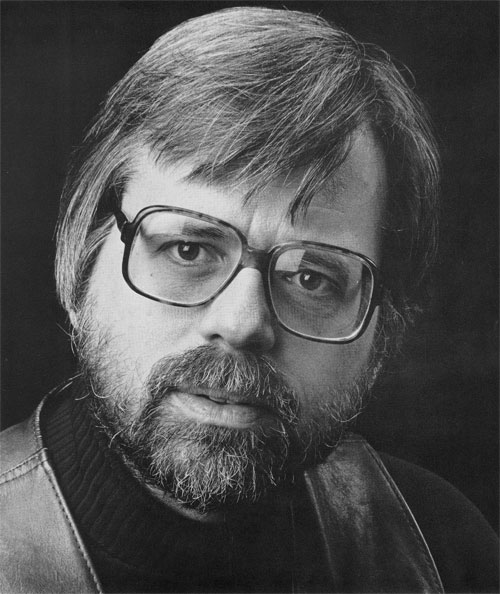
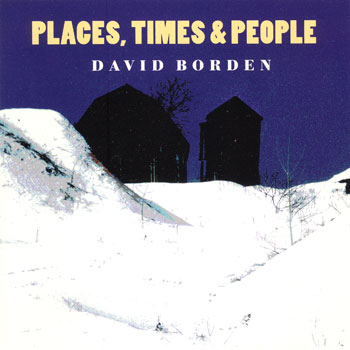


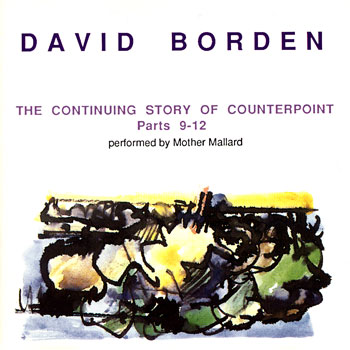
PRESS RELEASES
Make Way for Mother Mallard: 50 Years of Music press release
Like a Duck to Water press release
1970-1973 press release
Places, Time & People press release
The Continuing Story Of Counterpoint: 1-4+8 press release
The Continuing Story Of Counterpoint: 5-8 press release
The Continuing Story Of Counterpoint: 9-12 press release
CUNEIFORM E-BLASTS
4/2015: Celebrating Springtime with David Borden's "Easter"
6/2011:
David Borden / Mother Mallard perform The Continuing Story of
Counterpoint @ the Issue Project Room, Brooklyn, NY, 6/29/2011
4/2010: David Borden performs @ the Museum of Making Music
3/2009: Mother Mallard's 40th Anniversary concerts
